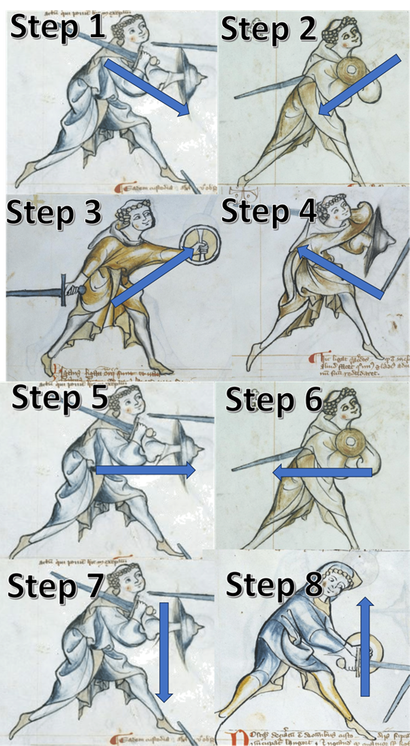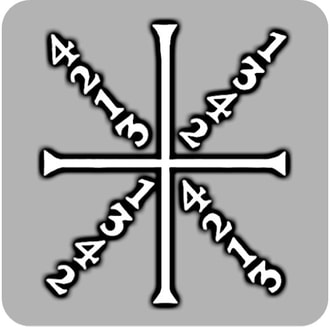|
Today, we will discuss one of my favorite flow drills to get fencers used to moving with a sword and buckler. The techniques in I.33 require quite a bit of fluidity in bringing the sword and buckler together. This can be overwhelming for new fencers, so this is a valuable drill for building flow and comfort with the weapon set. Details of the DrillThis drill is based on the British military sabre drills from Henry Angelo. This drill starts with the fencer in the second ward. From there, deliver a cut from your shoulder to your knee on the opposite side and end in the first ward. Next, deliver a cut from the buckler side shoulder to the opposite knee. This is done by extending the buckler arm forward with the thumb down to move the elbow out of the way of the sword. End this cut into the fifth ward. Now, cut up above the buckler and end in the third ward. Next, perform another rising cut above the buckler and end in the second ward. Now, deliver a horizontal cut under the buckler and end in the first ward. Then, deliver a horizontal cut back under the buckler and into the second ward. Finally, deliver a vertical cut above the head and bring it towards the buckler. Then, recover into the second ward. The intent of this drill is to help a fencer get comfortable with using the sword and buckler as a weapon pair. Be sure to emphasize bringing the sword and buckler together and positioning the buckler to defend the hand along the path of the cut. When doing this drill, it is important to practice retracting the buckler during the cut and to keep the sword hand either at or behind it, ensuring the safety of the sword hand. Variations of the DrillThe drill can also be modified in several ways. One modification is to step with each cut. This adds the practice of using footwork while focusing on sword and buckler placement. I commonly drill this by stepping forward with the first action and then stepping back with the next. This helps the fencer practice not narrowing their stance when performing sword actions. Another variation involves using the paths of the cut described but not fully ending in the ward. This can be beneficial to practice quicker elbow or wrist cuts while in a bind. However, while this drill is faster, it also can be sloppier without the fencer having an end ward for each action. To combat this, focus on transitioning naturally into the next action while ensuring the sword and buckler are close, and the sword hand stays behind the buckler. The third modification (and certainly not the last) is to change what cuts are performed. For example, only the third and fourth actions with the rising cuts could be performed if the fencer would prefer to practice those cuts. Alternately, thrusts could be mixed instead of cuts to practice transitioning thrusts and cuts while keeping the sword and buckler together. The Meyer’s Cross can also be used for different variations on this drill. Closing ThoughtsThis drill is a fantastic drill for sword and buckler fencers at all levels. Sword and buckler, especially I.33, relies heavily on the fencer feeling comfortable with using the weapon set together. By practicing these flow drills, fencers can build the muscle memory and discipline needed to fence effectively with this weapon combo.
0 Comments
Leave a Reply. |
Proudly powered by Weebly




